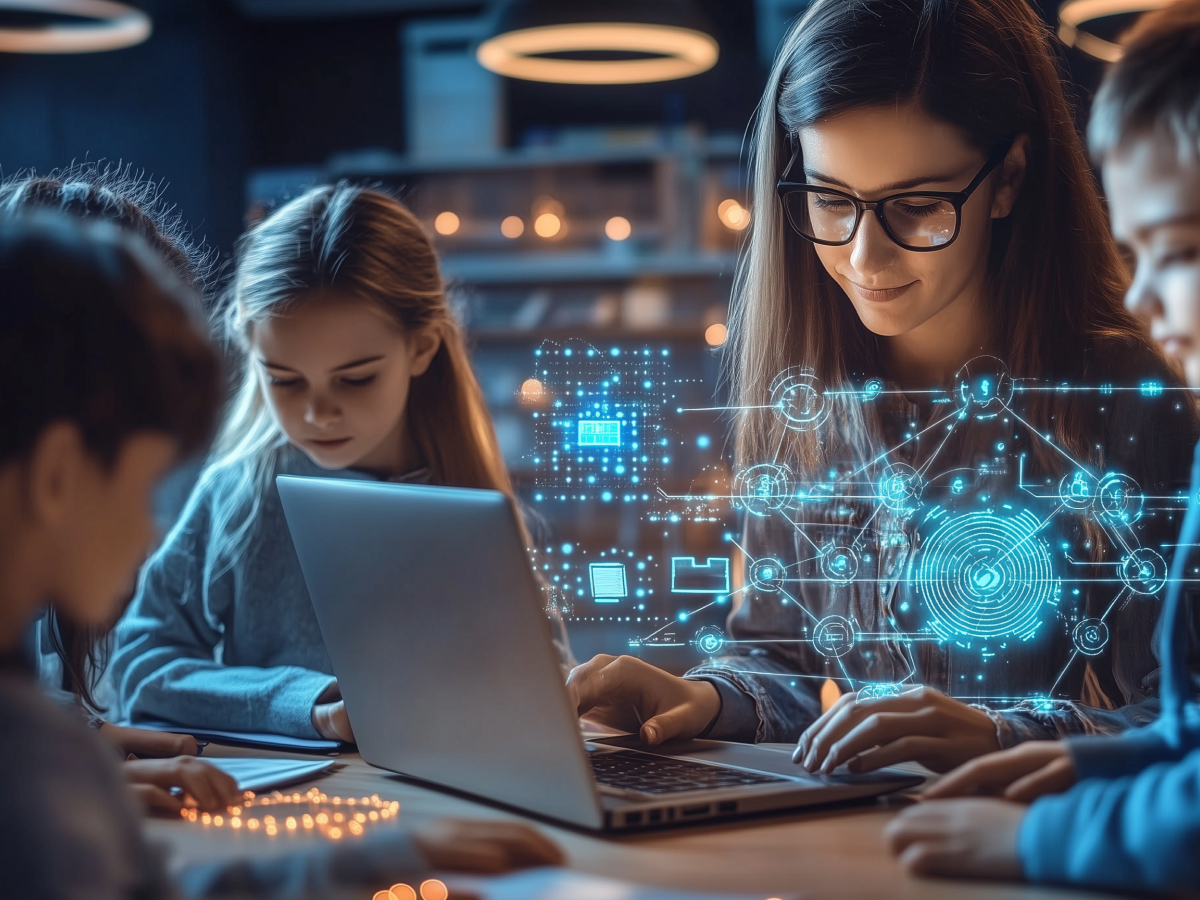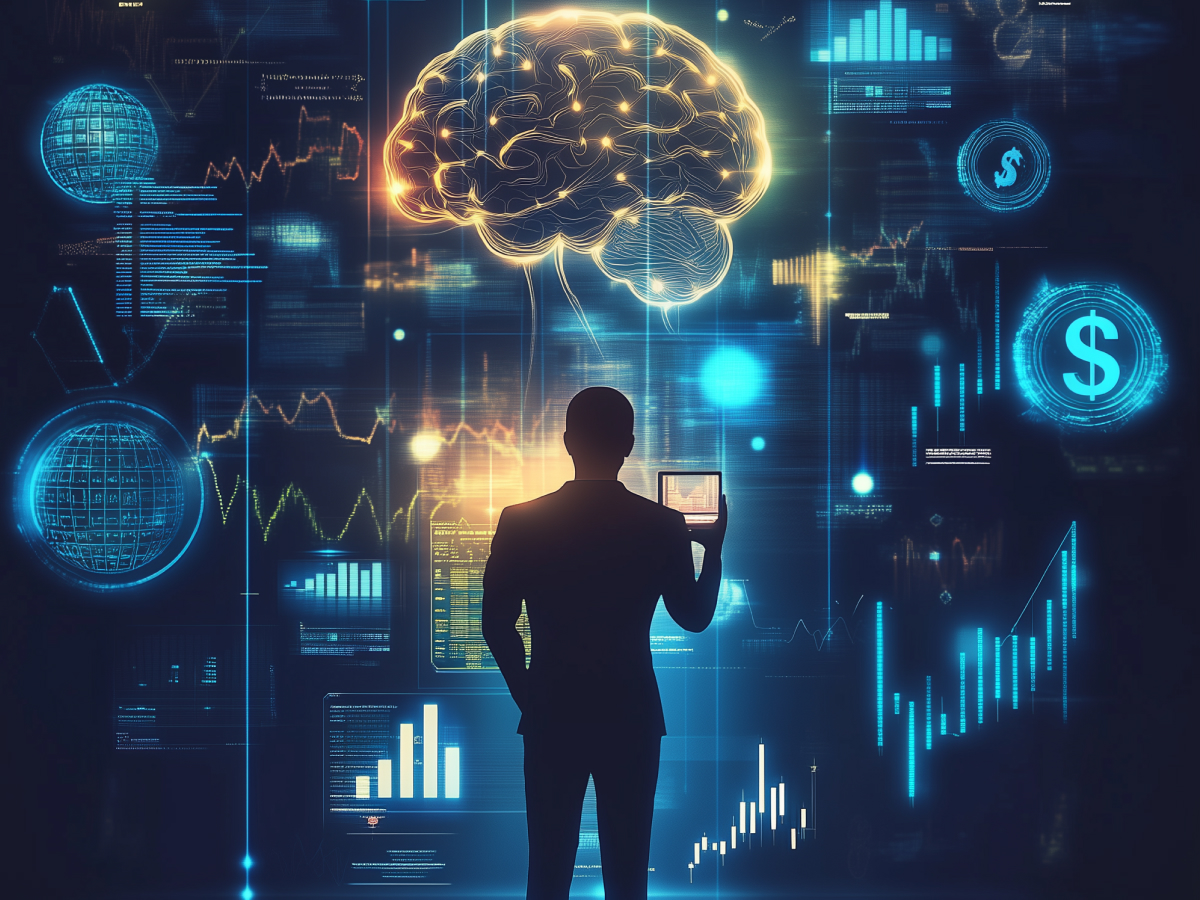AI-driven education models promise improvements in academic outcomes
The core idea is simple: traditional classrooms follow a fixed pace, leaving some students behind while others get bored. AI changes that by personalizing the learning experience for each student, adapting in real-time based on performance and engagement. This makes sure that students stay in their optimal learning zone, challenged but not overwhelmed.
The results speak for themselves. Unbound Academy’s AI-driven approach is projected to deliver 2.4 times the academic growth compared to conventional schools. The ability to scale this kind of personalized learning across different regions and demographics could redefine how we think about education.
Of course, AI isn’t a silver bullet. Success depends on factors like student motivation, access to technology, and the quality of AI-generated feedback. But if we get it right, we’re looking at an education system that’s more effective, efficient and accessible to students everywhere.
AI tools are addressing resource constraints in education
Education systems today are stretched thin. In many U.S. school districts, teachers face classrooms with over 40 students, making it nearly impossible to provide the kind of individualized attention each student needs. AI can change that. Tools like Writable and Photomath are stepping in to fill the gap, automating time-consuming tasks such as grading and feedback.
Take Writable, for example. It uses AI to generate draft feedback on student assignments, allowing teachers to focus on refining and personalizing that feedback rather than starting from scratch. This kind of support means a teacher can handle a much larger workload without sacrificing quality. If a teacher spends 10 minutes grading a single assignment, AI can cut that time, making it possible to focus more on teaching and mentoring rather than administrative tasks.
The challenge, of course, is making sure that AI improves rather than replaces human input. Automation is great, but education is still a deeply human experience. The goal isn’t to remove teachers but to free them from the repetitive, low-value tasks that drain their time and energy. Used correctly, AI can help create a more balanced, effective education system that works for both students and teachers.
AI-powered tutoring can bridge gaps in personalized learning
One-on-one tutoring has always been the gold standard for learning. The problem? It’s expensive, time-consuming, and difficult to scale. AI changes that equation. Platforms like Khan Academy’s Khanmigo are using AI to provide students with personalized tutoring experiences that were once only available to a select few.
The concept isn’t new. Back in 1984, educational researcher Benjamin Bloom demonstrated that students who received personal tutoring performed two standard deviations better than those in traditional classrooms. The challenge, of course, was scaling this approach. AI can now make that kind of personalization available to millions of students at a fraction of the cost.
Sal Khan, the founder of Khan Academy, sees Khanmigo as a potential breakthrough, calling it the “holy grail” of personalized education. The AI tutor continuously analyzes student progress, adjusts lesson difficulty, and provides real-time support tailored to each individual. This is a huge leap forward in making high-quality education accessible to everyone, not just those who can afford private tutors.
Of course, not everyone is convinced. Some experts, like Paul von Hippel from the University of Texas, argue that Bloom’s findings might be overstated, and AI may not fully replicate the human touch of a live tutor. But even with some skepticism, the reality is clear, AI tutoring has the potential to fill educational gaps and unlock opportunities for students worldwide. The focus now is on refining the technology, making sure it delivers real value, and making sure no student is left behind.
AI adoption in education raises concerns about human connection.
As AI continues to influence education, one of the biggest concerns is the potential loss of human connection. While AI tools like those used in Unbound Academy offer personalized instruction, they reduce the role of human teachers in the learning process. Instead of traditional educators, Unbound Academy relies on AI for teaching core subjects like math, reading, and science, while human “guides” provide emotional support and life skills training.
This shift raises questions: Will students miss out on the mentorship and interpersonal relationships that come with human-led teaching? Can AI effectively nurture creativity, emotional intelligence, and social skills? Learning isn’t just about absorbing information; it’s also about collaboration, critical thinking, and communication, skills traditionally honed through human interaction.
While AI excels at optimizing academic content, its ability to replicate the nuances of empathy, encouragement, and personal mentorship remains uncertain. Supporters argue that AI frees up human teachers to focus on what matters most, emotional and social development. Critics worry that students may become too reliant on AI, missing out on the unique value that comes from engaging with a human mentor.
In the long run, the challenge will be finding the right balance. Schools that integrate AI effectively will need to make sure that technology improves, rather than replaces, the human connections that are so important to the learning experience.
The historical evolution of computer-assisted instruction (CAI)
AI-driven education is not an entirely new concept; it’s the latest chapter in a decades-long effort to integrate technology into learning. The first major step in this journey was PLATO (Programmed Logic for Automatic Teaching Operations), introduced in the 1960s. PLATO provided interactive lessons and real-time feedback using a centralized computer system, but high costs and limited scalability led to its eventual decline.
In the early 2000s, platforms like Second Life attempted to create immersive virtual learning environments where students could interact using avatars. Universities such as Stanford and Harvard experimented with courses in Second Life, but the platform struggled due to a steep learning curve, technical limitations, and poor user experience.
These early attempts laid the groundwork for today’s AI-powered solutions, which use advances in cloud computing and machine learning to provide more scalable and cost-effective educational tools. The key difference now is that AI can offer real-time personalization and automation, overcoming many of the obstacles that hindered earlier technologies.
The lesson from past efforts is clear, technology alone isn’t enough. Successful integration requires careful planning, user-friendly design, and a clear understanding of educational goals. AI initiatives must learn from the mistakes of the past to give long-term sustainability and effectiveness.
AI has the potential to democratize education but could widen disparities.
AI in education has the potential to level the playing field by making high-quality instruction accessible to students in underserved communities. With AI-driven tools, students in remote areas can access personalized learning experiences that were previously available only to those with access to top-tier schools and tutors.
However, there’s a flip side. AI-based education requires reliable technology, devices, internet access, and infrastructure that not all students have. Khanmigo, currently being piloted in 266 U.S. school districts, aims to support diverse educational environments, but it also highlights the disparities in access to technology across different regions and socio-economic backgrounds.
If AI implementation isn’t managed carefully, it could exacerbate existing educational inequalities rather than bridge them. Wealthier schools may benefit from cutting-edge AI tools, while underfunded institutions struggle to keep up, widening the digital divide.
To make sure AI truly democratizes education, policymakers and educators must prioritize equitable access to technology and training. Investments in infrastructure, teacher upskilling, and inclusive policies will be key to making AI-driven education a force for positive change rather than another barrier to opportunity.
The integration of AI in education challenges traditional learning models and teacher roles.
The rise of AI in education is prompting a fundamental rethink of the teacher’s role. Traditionally, teachers have been the primary source of knowledge, guiding students through lessons and providing feedback. With AI, much of this content delivery and assessment can be automated, allowing teachers to focus more on facilitation, mentorship, and emotional support.
AI-powered platforms like Khanmigo and IXL analyze student progress, adapt lesson plans, and even predict areas where students may struggle. This data-driven approach enables teachers to provide more targeted interventions, but it also raises questions about the evolving role of educators. Will they become facilitators rather than instructors? How will AI impact their professional development and job satisfaction?
Some educators worry that AI might undermine their authority and autonomy in the classroom, turning them into supervisors rather than active participants in the learning process. Others see AI as a powerful tool that can free them from administrative burdens and allow them to focus on higher-order skills such as critical thinking, creativity, and social-emotional learning.
The challenge will be making sure that AI complements rather than replaces the human touch in education. As AI continues to grow, schools must invest in teacher training to help educators adapt to new technologies and redefine their role in ways that improve the student experience.
Key takeaways for enterprise leaders
- AI-driven education models are improving learning outcomes by personalizing instruction and adapting to individual student needs in real time. Leaders should explore AI-driven personalization strategies to improve workforce training and skill development.
- Platforms like Khan Academy’s Khanmigo demonstrate how AI can provide scalable, cost-effective tutoring, offering insights for businesses looking to scale personalized employee learning programs.
- AI tools such as Writable are addressing resource constraints by automating time-consuming tasks like grading, helping educators to focus on higher-value activities. Enterprises can use similar AI solutions to simplify administrative processes and improve operational efficiency.
- The use of AI in education highlights opportunities to optimize resource allocation and increase productivity, particularly in large-scale environments with high workloads.
- While AI increases efficiency, it raises concerns about reduced human interaction and emotional engagement in learning. Business leaders should make sure AI implementation complements, rather than replaces, human touchpoints to maintain engagement and motivation.
- The shift in roles from traditional educators to AI facilitators presents a parallel opportunity for businesses to redefine job functions, emphasizing strategic and creative tasks over routine operations.
- AI in education has the potential to democratize access to quality learning, but disparities in technology access could widen existing inequalities. Companies investing in AI-driven initiatives should prioritize accessibility and inclusivity to ensure broad adoption and impact.





